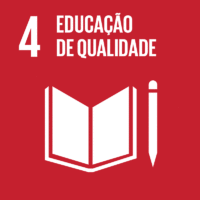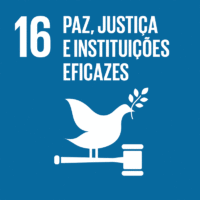Ciência_Iscte
Comunicações
Descrição Detalhada da Comunicação
Integrating the Sustainable Development Goals into the strategy of Higher Education Institutions
Título Evento
7th Responsible Management Education Research Conference
Ano (publicação definitiva)
2020
Língua
Inglês
País
Suíça
Mais Informação
Web of Science®
Esta publicação não está indexada na Web of Science®
Scopus
Esta publicação não está indexada na Scopus
Google Scholar
Esta publicação não está indexada no Google Scholar
Esta publicação não está indexada no Overton
Abstract/Resumo
The Sustainable Development Goals (SDGs) reflect the 2030 Agenda of the United Nations (UN) for the period 2015-2030. While their predecessors, the Millennium Development Goals (MDGs), were targeting developing countries, the SDGs were devised to elude the entire planet (Sachs 2012). The 17 SDGs, formally adopted by all United Nations Member States in September 2015, expand the 8 MDGs to include a broader set of areas and actors involved as they call for a collective action (Leal Filho et al. 2019a). Fukuda-Parr (2016, p. 44) highlights the three-year long negation process and the main differences, “not just in the number of goals and targets, but in their very purpose, conception, and the political process that drove their elaboration”. As noted by Sachs (2012, p. 2206) short after the UN Secretary-General Ban Ki-Moon’s high-level global sustainability panel issued a report proposing a set of Sustainable Development Goals to be adopted worldwide, “the SDGs are an important idea, and could help finally to move the world to a sustainable trajectory”.
The 2030 agenda is then, not only broader, but also more transformative (Fukuda-Parr 2016). It is organized into 17 SDGs and disaggregated into 169 targets, spread over five intertwined dimensions: People; Planet; Prosperity; Peace and Partnerships. The UN itself and the literature has called for an approach to the SDGs that recognizes the interlinkages across sectors, societal actors, and countries (e.g. United Nations 2015; Stafford-Smith et al. 2017). In this same line of thought, Allen et al. (2019) consider the systemic impact, together with the level of urgency and policy gap to present an integrated assessment approach to assist establishing priorities in SDG targets definition. This interconnectivity of the different goals calls for interdisciplinarity (Annan-Diab and Molinari 2017). Indeed, the field of sustainability and sustainable development research has proved to be interdisciplinary with multiple emerging areas (Hassan et al. 2014; Suriyankietkaew and Petison 2020). Still, this interconnectivity comes with its challenges, namely when it comes actors. The holistic approach of the SDGs has already raised some concerns in terms of the lack of boundaries and assignment of responsibilities among the governments, or the unclear responsibilities of non-governmental actors (Bexell and Jönsson 2017). Anyway, sustainability efforts call all sectors to act (García-Feijoo et al. 2020) and a “paradigm shift is required at all levels of the society” (Suriyankietkaew and Petison 2020, p. 92).
Particularly, HEIs can play important role in the path towards sustainable development (Leal Filho 2011). At the same time, they have been highly shaped by the sustainability agenda (Franco et al. 2019). On the one hand, the implementation of sustainable development in HEIs needs to go beyond policy (Leal Filho 2011). As Leal Filho (2011, p. 24) puts it, “university blueprints (or strategies), declarations or action plans are useless, unless they can be backed up by concrete action in one or more of the following areas: (a) curriculum greening; (b) campus operations; (c) research; (d) extension (i.e. continuing education and further education programmes); (e) concrete projects.”
On the other hand, unless the attempts to incorporate sustainability into policies, curriculum and practices of HEI are strategically supported by a coordinated and integrated governing approach, it is not effective (Franco et al. 2019). This means that HEI are rethinking their core activities in a systemic way to address the 2030 Agenda in their strategy (Paletta and Bonoli
2019). Literature reveals some cases of sustainable strategies in HEI (e.g. Mori Junior et al. 2019; e.g. Paletta and Bonoli 2019; Purcell et al. 2019; Ramísio et al. 2019), as well as at HEI at a national level (e.g. Larrán et al. 2016; Bieler and McKenzie 2017; Farinha et al. 2019; Parvez and Agrawal 2019; Shawe et al. 2019; Do 2020). Despite several positive cases, there is still a lack a systemic approach to the way sustainable development is integrated into HEI (Shawe et al. 2019). Leal Filho et al. (2019b) also concluded that more has to be done by HEI in terms of strategic planning for sustainable development, and this included “whole systems” perspective to the planning and implementation. The aim of this paper is to explore, in a cross-country study, how have HEIs are integrating in a systemic and holistic way the Sustainable Development Goals into their strategy. This is achieved by means of an international study among a sample of more than 100 higher education institutions, which aimed at ascertaining the extent to which the SDGs are being taken into account as part of their strategy, namely through teaching, research and operations. The paper also describes some measures which may be implemented, so as to make the SDGs more present in university programmes.
Agradecimentos/Acknowledgements
--
Palavras-chave
higher education,strategy,sustainability,SDG
Contribuições para os Objetivos do Desenvolvimento Sustentável das Nações Unidas
Com o objetivo de aumentar a investigação direcionada para o cumprimento dos Objetivos do Desenvolvimento Sustentável para 2030 das Nações Unidas, é disponibilizada no Ciência_Iscte a possibilidade de associação, quando aplicável, dos artigos científicos aos Objetivos do Desenvolvimento Sustentável. Estes são os Objetivos do Desenvolvimento Sustentável identificados pelo(s) autor(es) para esta publicação. Para uma informação detalhada dos Objetivos do Desenvolvimento Sustentável, clique aqui.

 English
English



